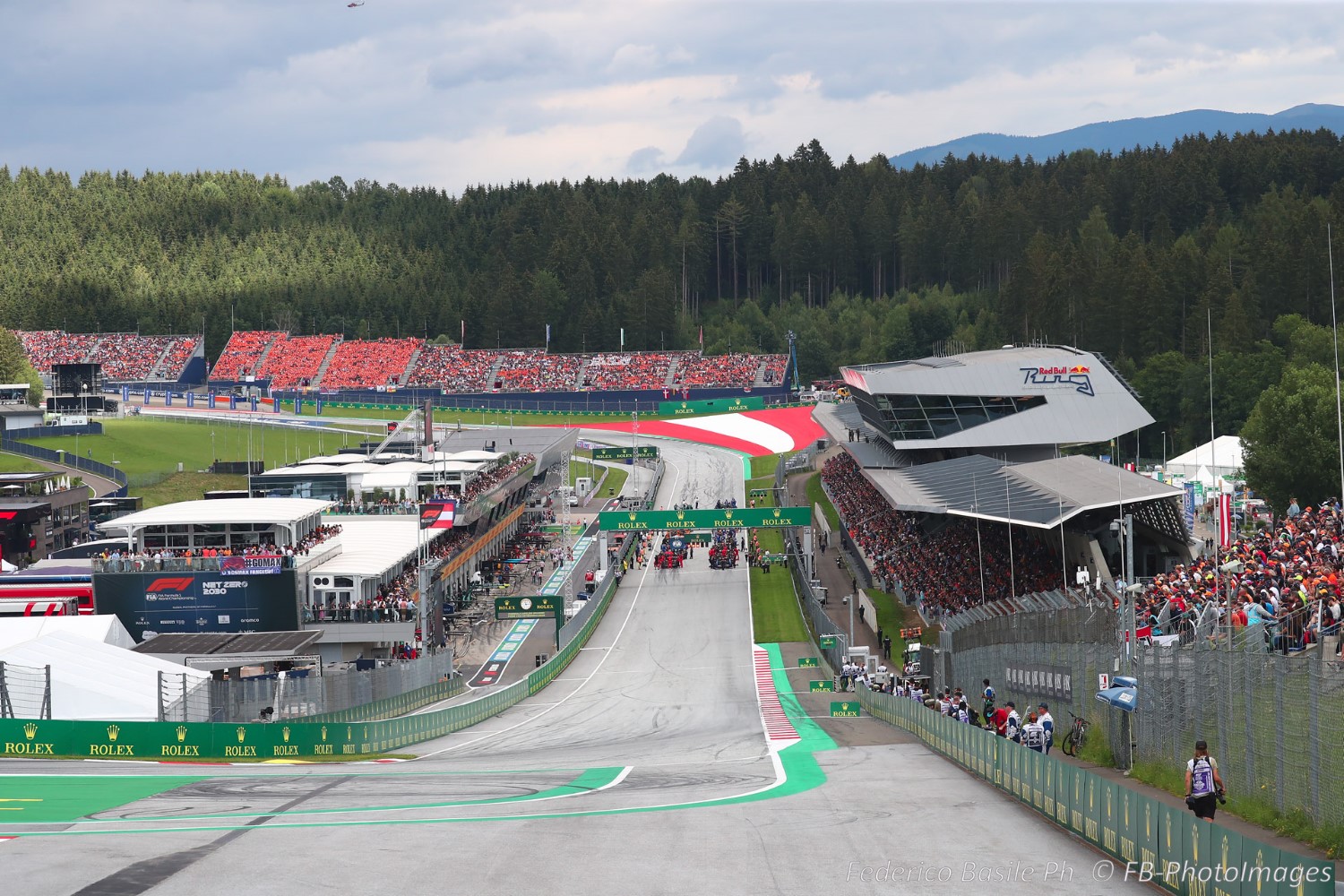F1: Austrian GP at the Red Bull Ring Preview
Round 10 of the 2023 FIA Formula 1 World Championship takes the 10 F1 teams to the Red Bull Ring, for the Austrian Grand Prix.
Austria made its first appearance in Formula 1 in 1964, at the unloved and featureless Zeltweg Airport, and when it made its full-scale championship return in 1970 it did so at the new Osterreichring, a fast and undulating circuit in the hills above the village of Spielberg.
Gone is the daunting layout of the Osterreichring, its sweeping corners on which Peterson, Brambilla and home hero Lauda all fought, consigned to history; parts of the original track remain in use in its new, shorter, nimbler layout, first used in 1997, but the track is very much different.
Austria was a fixture on the schedule through 1987, before it disappeared, re-emerging from 1997 until 2003 at the shortened and rebranded A1-Ring.
Another absence followed, with the entire facility falling into a state of disrepair, before it was acquired and renovated by Red Bull. Formula 1 returned to Austria in 2014 at the renamed and refreshed Red Bull Ring. At just 4.3km, and with only 10 corners, it is one of the shortest circuits on the calendar, and with lap times of around 65 seconds, Austria provides one of the closest qualifying sessions of the season.
Reception of the new layout wasn’t universally positive: yet the argument that constitution is not identity was reinforced by the series of entertaining, exciting races that the new track was able to provide – and that are still a feature of the Red Bull Ring to this day.
In the new Ring, the tradition of one of Formula One’s classic venues blends with the modern to produce a track that is exciting, fan-friendly, and boasting some of the most impressive facilities in the sport. Old and new come together, not as opposites but in synergy, to create something unique. It’s a race to look forward to; an event to savor and appreciate.
It’s almost by philosophical design, then, that this track is the one to see the debut of a new pilot project by the sport, with its introduction of sustainable sources of energy to power the operations of the paddock and a projected reduction of more than three quarters of its CO2 generation. The most traditional of sports powered in the most innovative of ways, in a classic venue reimagined for the future. Like the birth of a child, a new page is added, the latest in a long and cherished book: one that builds on the heritage and importance of all that was before, but a blank one and full of potential.
For the fourth successive year, there will be two ‘lights out’ opportunities in Austria. The venue hosted back-to-back grands prix in both 2020 – including the delayed season-opening event – and 2021, due to the pandemic. Last season Austria returned to its single grand prix but hosted F1 Sprint. Once more, the two-race format will feature this weekend, with separate qualifying sessions for the Sprint Race and the grand prix, as was first introduced in Baku in April. It will mark the second of six F1 Sprint events through the 2023 season.
The weather looks a bit unpredictable too, so it will definitely mix things up a little bit.
Race Insight
Race interruptions: The rate of Safety Car deployments is relatively low at the Red Bull Ring. In the last five Grands Prix here there have been five Safety Cars, but three of those appeared in the 2020 Austrian Grand Prix. As for Virtual Safety Cars, there have been just two VSCs since the system was introduced back in 2015.
Overtaking: With three DRS zones, it’s not difficult to overtake at the Red Bull Ring. More than 80 percent of passes use DRS and most of those overtakes take place going into Turn Three and Turn Four. With a 330-metre run to Turn One from pole position, drivers can also make up positions on the opening lap.
Strategy: As was the case in Austria last season, the softest Pirelli compounds are in play this weekend. The C3, C4 and C5 compounds are available but there’s just one hour of practice – on Friday – due to the Sprint. High-speed corners mean higher tire degradation and the possibility of a multi-stop race.
Unlocking the Lap
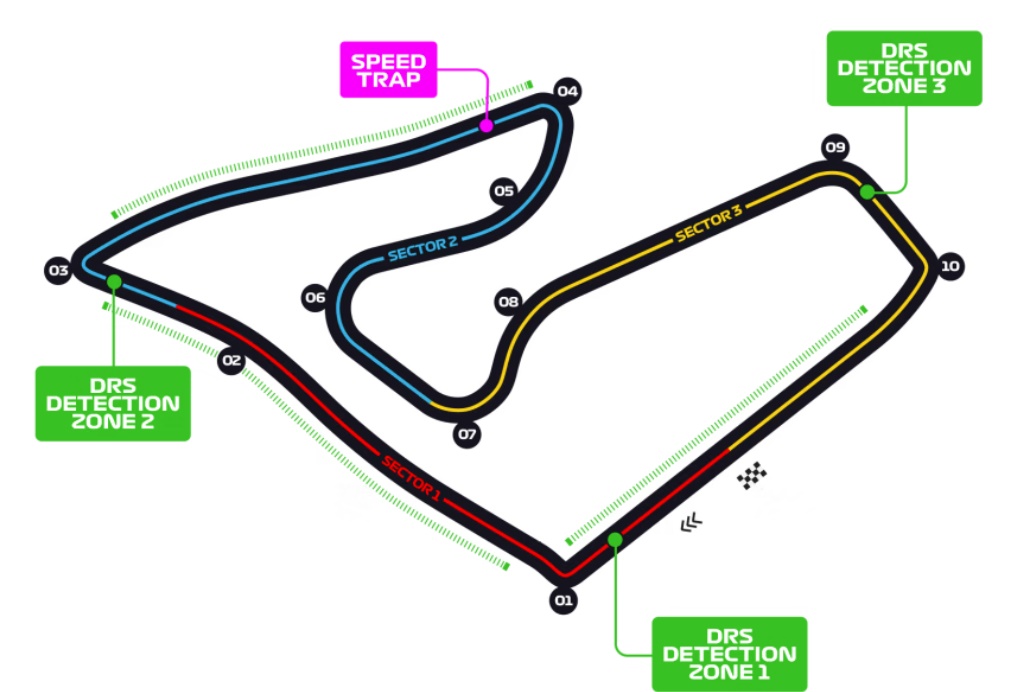
The Red Bull Ring is one of the shortest laps on the calendar but it pushes drivers with elevation changes and a smattering of high-speed corners. SentinelOne takes us through the 10 turns that await in Spielberg.
The long start-finish straight leads drivers uphill into the medium-speed right-hander that is Turn One. It’s imperative to carry as much speed as you can onto the following straight that takes you to Turn Three, which is the most challenging corner on the circuit. This sharp right-hand turn includes a raised curb and tight run-off area. The braking point and exit are both uphill, which means traction is at a premium here.
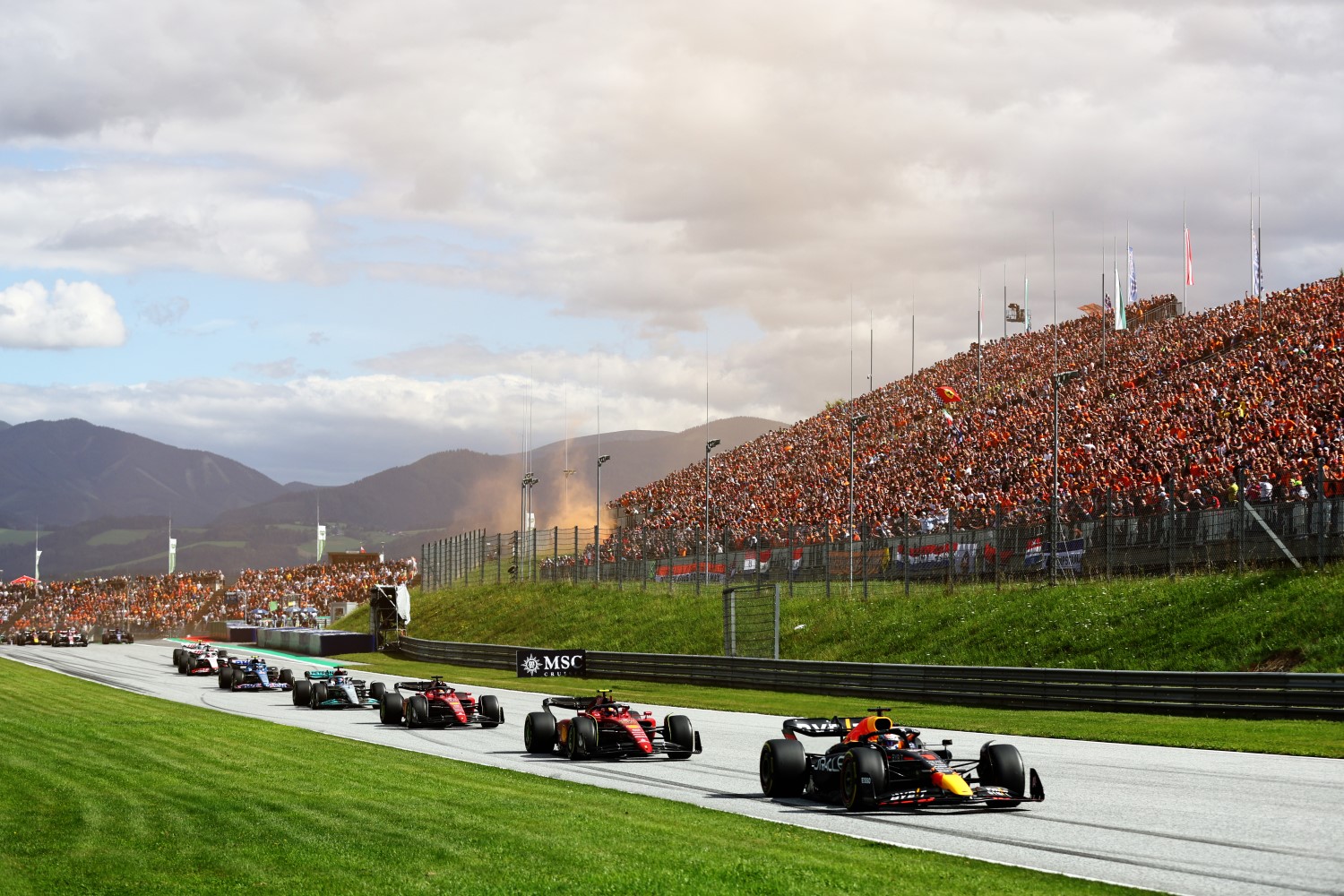
Then it’s downhill to the long Turn Four hairpin that leads through a host of fast turns: left through Turn Six, another left into Turn Seven and right through Turn Eight. This sequence is straightforward, but understeer through here can throw the car into the awaiting gravel traps.
Turn Nine is a rapid right-hander and the final corner, Turn 10, requires a good exit to set you up for the long uphill straight.
Fact File: Austrian Grand Prix
- With a lap record of just 1:02.939, set by Valtteri Bottas in 2020, the circuit in Spielberg is the shortest in terms of time on the 2023 calendar.
- Despite that, it ranks fifth in terms of shortest distance, clocking in at 4.318 km. Only Monaco, Zandvoort, Mexico City, and Interlagos are shorter.
- With just 10 corners, the Ring has the fewest of any track of the current F1 circuits. At the same time, Turns 2, 5 and 8 are taken at full throttle and are therefore not considered to be corners in an engineering sense.
- Unsurprisingly, given the nature of the track, we see the fewest amount of gear changes of any lap across the season at just 32.
- There are large demands placed on a car’s handling in Austria, whilst at the same time the circuit demands good mechanical grip at low speed (Turns 1, 3, and 4) and strong performance at high speed (Turns 6-7 and 9-10). Engineers have to find the best compromise with set-up in order to achieve the best lap time.
- This weekend sees the second running of the new Sprint weekend format – teams will partake in FP1 on Friday before Qualifying takes place that afternoon. Saturday sees the Sprint Shootout followed by the F1 Sprint, with the Austrian Grand Prix taking place on Sunday.
- The difference in elevation of 69 meters between the lowest and highest points at the circuit is one of the largest of the season. That is unsurprising given the track’s location in the Styrian mountains.
- It also has a steep gradient from track edge-to-edge in places, as exemplified by Turns 3 and 4. The circuit here slopes up towards the apex as the car drives over the crest while accelerating out of the corner. This can result in one wheel leaving the ground, causing challenges with braking, stability, and traction.
- The track has three very hard braking zones in succession on the approaches to Turns 1, 3, and 4. As the brakes are unable to cool down sufficiently over the rest of the track, as the lap is relatively short, it has an impact on the maximum pressures and general wear and tear experienced.
- For that reason, teams must apply as much cooling as possible to the brakes. That poses a challenge in warming up the front tires. With a short out-lap, it is difficult to get them in the right operating window for a qualifying lap.
- The Ring is notorious for its aggressive curbs and is considered to be one of the toughest tests for vehicle suspension. This especially applies to the curbs at the exit of T1, T6, and T7, which take a high toll on the cars due to their amplitude (i.e. the gap between the highest and lowest points of the curbs) and the frequency (speed effect) at which they are taken.
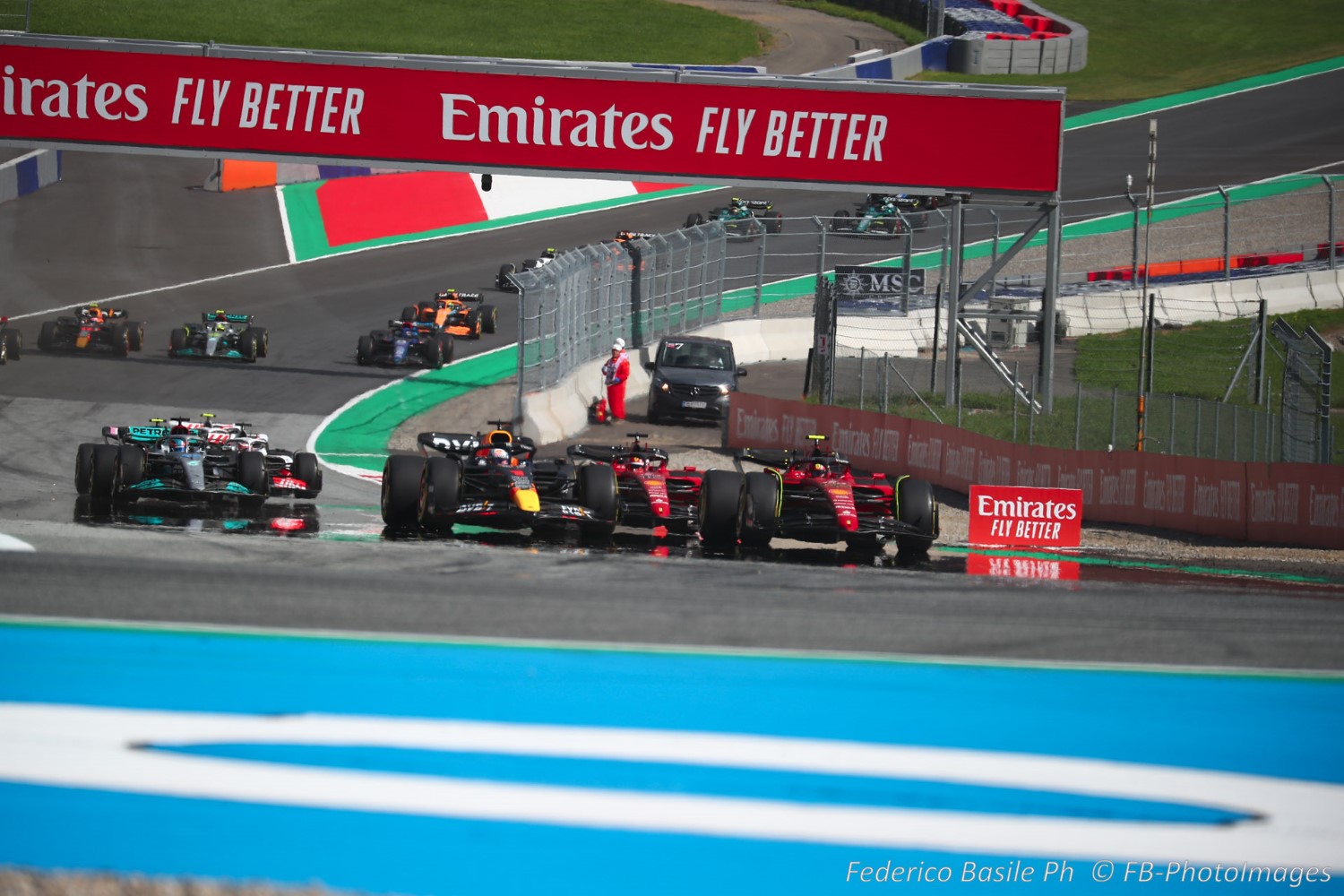

Pirelli Tires
MARIO ISOLA – MOTORSPORT DIRECTOR
“The Red Bull Ring is a circuit where tires get no rest. The cars race through the track’s 10 corners in a lap time of just over a minute, and the few straights mean that there is little reprieve for the tires. The asphalt has a fairly high micro and macro roughness, due to the age of the surface, while grip is high at the start of the lap. Traction and braking are key elements, while particular attention will have to be paid to managing tire overheating. Drivers who manage not to cool their tires properly may find it difficult to defend against attacks from rivals, especially in the first and last sectors. An important factor in this will be ambient temperature, with weather conditions traditionally somewhat variable. Last year’s race was largely a two-stopper using the medium and hard compounds, but a one-stopper could also be an option this year if degradation is not too high.”
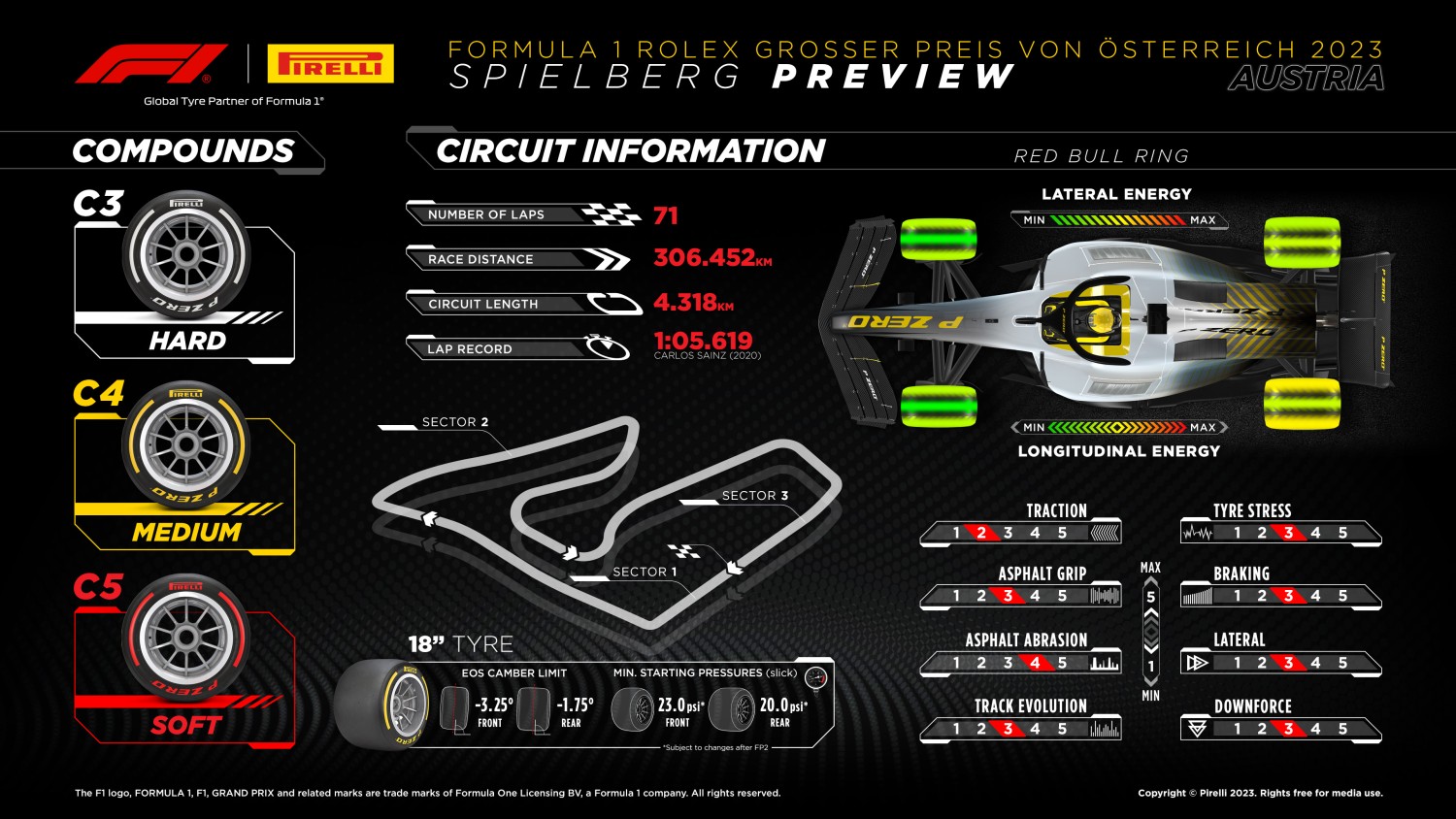
- The teams will have the C3 compound as P Zero White hard, C4 as P Zero Yellow medium and C5 as P Zero Red soft at the Austrian Grand Prix. Just like the last race at Montréal, the three softest compounds in the Pirelli F1 range have been nominated.
- The Spielberg weekend will be the second grand prix on the calendar featuring an F1 Sprint. Qualifying to decide the starting grid for the Grand Prix is scheduled for Friday afternoon, after a single free practice session in the morning. Saturday will instead be dedicated to the Sprint Shootout and the Sprint Race. During the three short sessions that make up the Sprint Shootout (lasting 12, 10, and eight minutes respectively) teams will have to fit new tires and use the medium compound for Q1 and Q2. In Q3, only the soft compound will be used.
- The Red Bull Ring has only 10 corners, with the shortest lap time of any track on the championship. The lap record is held by Ferrari’s Carlos Sainz, who completed lap 68 of the 2020 Styrian Grand Prix in a time of 1m05.619s, driving a Renault-powered McLaren on P Zero soft (C4) tires.
- The driver with the most wins on the current version of the Austrian track is Red Bull’s Max Verstappen, with four wins from the 18 races held since 1997. The most successful manufacturer is Mercedes with six wins, courtesy of Nico Rosberg, Lewis Hamilton, and Valtteri Bottas – who all claimed two races each.
- Most drivers made two stops last year, starting on the medium ahead of two stints on the hard. There was plenty of overtaking, particularly in the midfield, with five cars competing for the places just off the podium. The elevation changes at the Red Bull Ring put it second only to Spa-Francorchamps in terms of variation. There’s a change of more than 60 meters between the lowest point on the track – just before Turn 1 – and the highest point, after Turn 2.
Weather Forecast
FRIDAY, JUNE 30 – FP1 AND QUALIFYING
Conditions: Expected to be sunny in the morning but with increased chance of rain hitting the track in the afternoon. FP1: 24°C // Q: 21°C.
Maximum temperature expected: 25 Celsius
Minimum temperature expected: 13 Celsius
Chance of rain: 60%
SATURDAY, JULY 1 – SPRINT SHOOTOUT AND SPRINT
Conditions: High chance of showers in the afternoon with possible thunderstorms. SS: 20°C // SPRINT: 19°C.
Maximum temperature expected: 21 Celsius
Minimum temperature expected: 14 Celsius
Chance of rain: 80%
SUNDAY, JULY 2 – RACE WEATHER
Conditions: Partly cloudy in the morning with a slight chance of rain hitting the race in the afternoon. RACE: 24°C
Maximum temperature expected: 25 Celsius
Minimum temperature expected: 13 Celsius
Chance of rain: 20%
